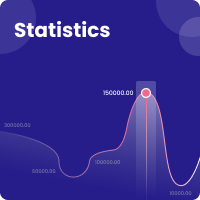The Evolution of Audio Processing: Technological and Digital Mediation in Music Creation and Record Production
Abstract
This article describes the technical possibilities that, through the use of digital audio processing technology, have influenced the evolution of music and record production, from the musical creation and composition to the distribution of the finished product. As a whole, these possibilities have brought about significant changes not only in the ways of creating but also in the final aesthetic-sound results. An analysis based on primary sources, bibliographic references, and the autoethnographic experience of the authors reveals the influence that these changes have had on producers, engineers, and musicians in the performance of their artistic work. Finally, there is evidence of a strong impact of the technological passage of time on the creative processes and the aesthetic-sound results, which demonstrates, once again, the importance of studies on technology and its effect on traditional arts.
References
Bernard, H. R. (1988). Research Methods in Cultural Anthropology. Sage Publications.
Burgess, R. J. (2013). The Art of Music Production: The Theory and Practice (4.a ed.). Oxford University Press.
Caballero Parra, C. A. (2010). La producción musical en estudio. Instituto Tecnológico Metropolitano.
Frith, S., y Zagorski-Thomas, S. (eds.). (2012). The Art of Record Production: An Introductory Reader for a New Academic Field. Ashgate Publishing.
Immink, K. A. S. (1998). The Compact Disc Story. Journal of the Audio Engineering Society, 46(5), 458-465. http://www.aes.org/e-lib/browse.cfm?elib=12144
International Federation of the Phonographic Industry. (2013). IFPI Digital Music Report 2013. Engine of a digital world. https://www.medienorge.uib.no/files/Eksterne_pub/Digital-Music-Report-2013-IFPI.pdf
Lacasse, S. (2005). Persona, emotions and technology: the phonographic staging of the popular voice. https://charm.cch.kcl.ac.uk/redist/pdf/s2Lacasse.pdf
Lee, S. (2012). Bad 25 [Película]. Optimum Productions.
Lidbetter, P. S. (1987). Progress in Digital Audio. AES Conference Paper 2533. https://www.aes.org/e-lib/browse.cfm?elib=4869
Massot Lafon, I., Dorio Alcaraz, I., y Sabariego Puig, M. (2004). Estrategias de recogida y análisis de la información. En R. Bisquerra Alzina (coord.), Metodología de la investigación educativa (pp. 329-366). La Muralla.
Mehrnoosh, B. (2021). Comparing Analog and Digital Non-Linear Sonic Signatures: an Investigation on Creative Application and Subjective Perception using the Universal Audio 1176 FET Compressor [Trabajo de pregrado, Lulea University of Technology]. http://urn.kb.se/resolve?urn=urn%3Anbn%3Ase%3Altu%3Adiva-84598
Mozart, M. (2014). Compression is not what you think it is. Part 1 - the Royal Harmonics Orchestra. https://mixedbymarcmozart.com/2014/10/23/compression-think-part-1-music-tube-compressor-royal-harmonics/
Palm, D., y Lidholm, J. (2008). Analog vs Digitalt. En studie i huruvida en digital plug-in låter annorlunda än sin analoga förebild [Trabajo de pregrado, Musikhögskolan i Stockholm]. http://www.diva-portal.org/smash/get/diva2:450054/FULLTEXT01.pdf
Reason Studios. (s.f.). Reason+. https://reasonstudios.com/
Rosso, J. (2019). Skillnaderna mellan Universal Audio 1176LN och dess emuleringar [Trabajo de pregrado, Högskolan Dalarna]. http://urn.kb.se/resolve?urn=urn%3Anbn%3Ase%3Adu-29782
Rumsey, F. (2010). Digital Audio Effects and Simulations. Journal of the Audio Engineering Society, 58(5), 420-427. http://www.aes.org/e-lib/browse.cfm?elib=15455
Schmidt Horning, S. (2012). The Sounds of Space: Studio as Instrument in the Era of High Fidelity. En S. Frith y S. Zagorski-Thomas (eds.), The Art of Record Production: An Introductory Reader for a New Academic Field. Ashgate Publishing.
Schmidt Horning, S. (2013). Chasing Sound: Technology, Culture & the Art of Studio Recording from Edison to the LP. The Johns Hopkins University Press.
Seidenberg, S. (2010). The Record Business Blues. ABA Journal, 96(6), 54-61.
Stockham, T. G. (1977). Records of the Future. Journal of the Audio Engineering Society, 25(10/11), 892-895. http://www.aes.org/e-lib/browse.cfm?elib=3308
Strawn, J. (1997). Technological Change: The Challenge to the Audio and Music Industries. Journal of the Audio Engineering Society, 45(3). http://www.aes.org/e-lib/browse.cfm?elib=7863
Taylor, T. D. (2001). Strange Sounds. Music, Technology and Culture. Routledge.
Zagorski-Thomas, S. (2014). The Musicology of Record Production. Cambridge University Press. https://doi.org/10.1017/CBO9781139871846
Zak III, A. (2012). No-Fi: Crafting a Language of Recorded Music in 1950s Pop. En S. Frith y S. Zagorski-Thomas (eds.), The Art of Record Production: An Introductory Reader for a New Academic Field. Ashgate Publishing.
Downloads
Copyright (c) 2023 Jorge Mario Valencia Upegui, Carlos Andrés Caballero Parra

This work is licensed under a Creative Commons Attribution-NonCommercial-ShareAlike 4.0 International License.
Altmetric
Funding data
-
Instituto Tecnológico Metropolitano
Grant numbers PCI - 19204










